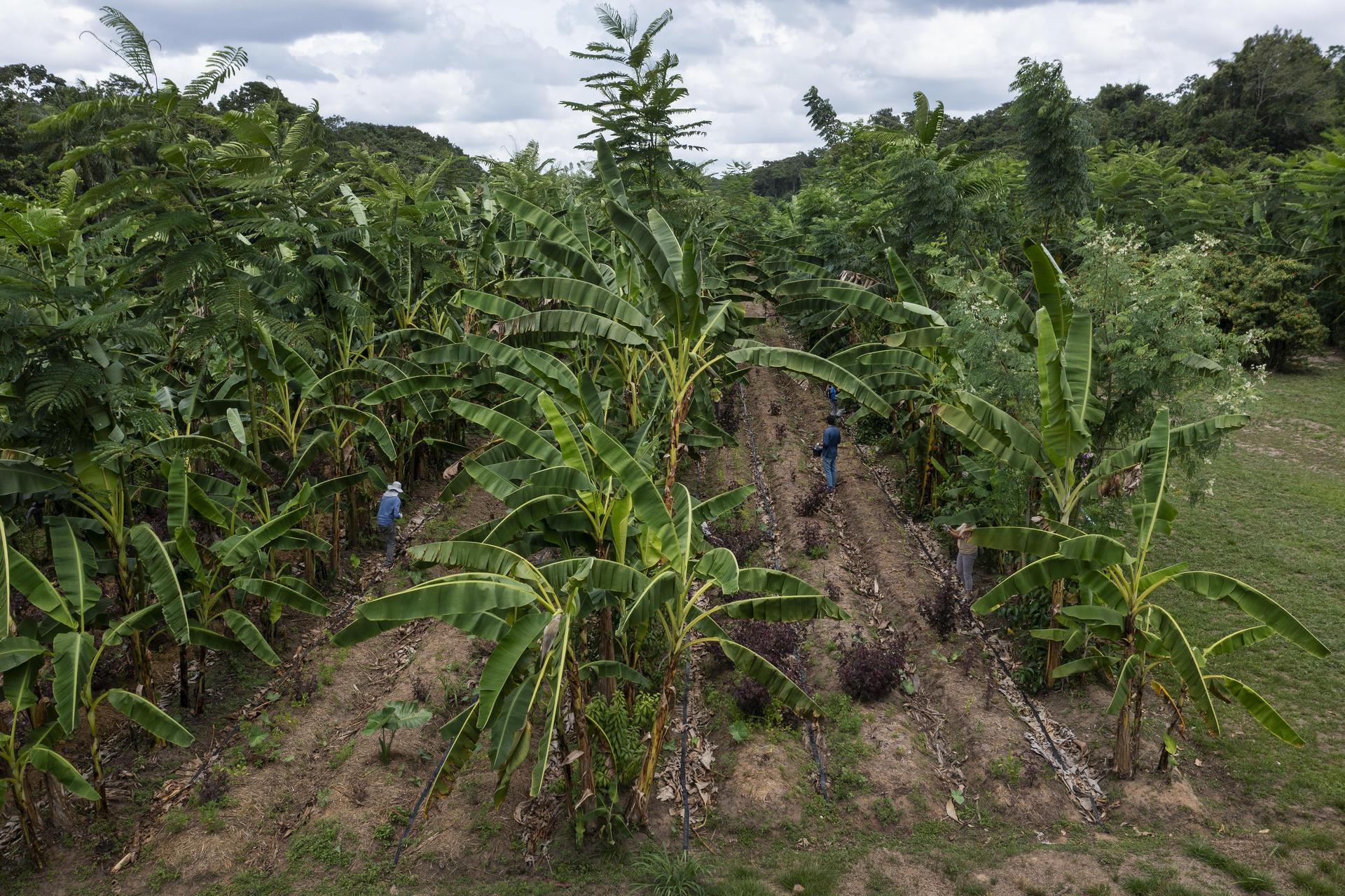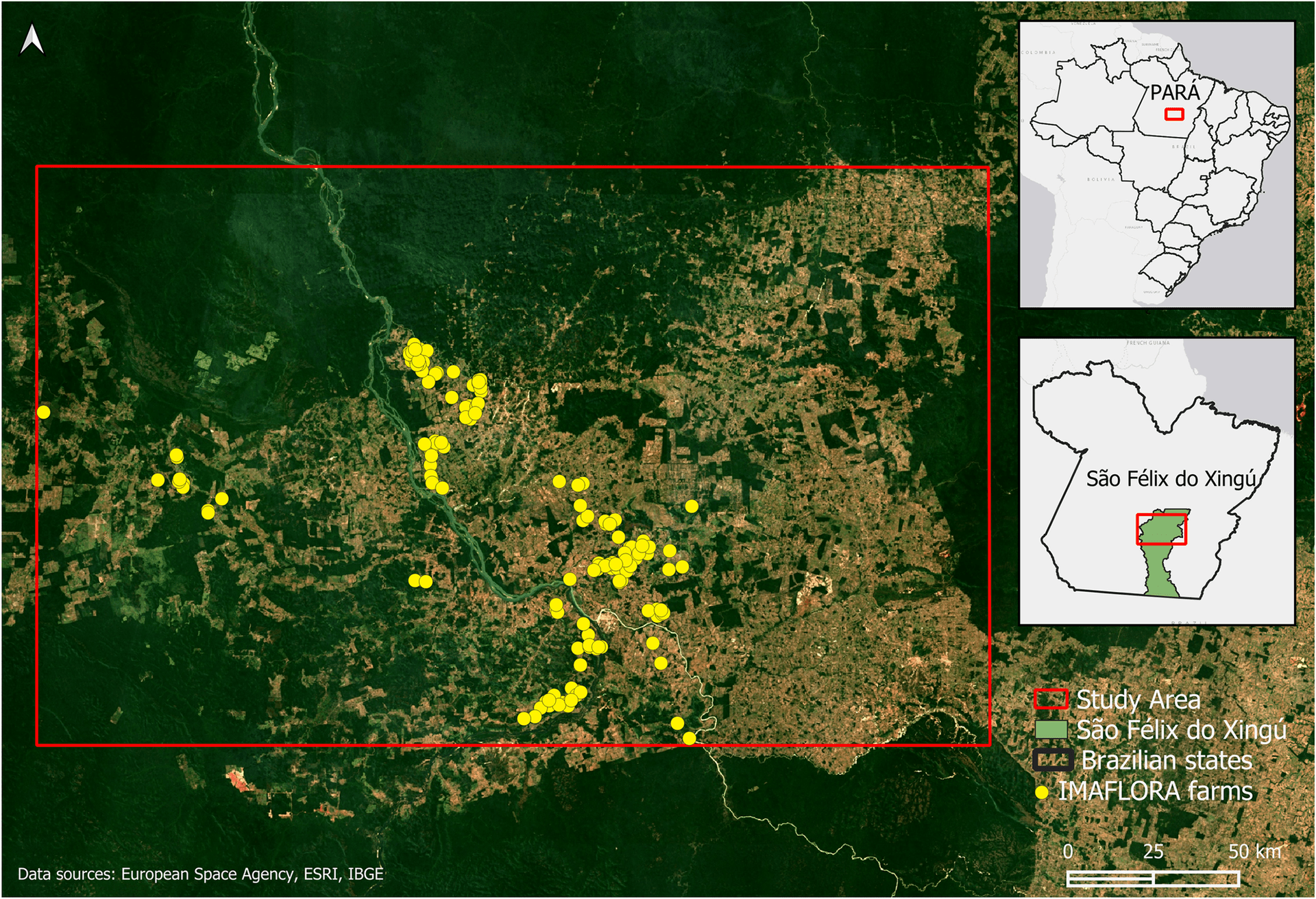Research Articles New Paper Introduces a Coupled Approach to Monitoring Biodiversity Impact

Our need for robust, timely, and easily digestible information collected using innovative monitoring practices to evaluate the environmental and biodiversity impacts of initiatives, including investment in sustainable agriculture, is greater than ever.
A new research paper titled 'Coupling Remote Sensing and eDNA to Monitor Environmental Impact' published in PLOS ONE lays out a coupled approach using remote sensing and environmental DNA (eDNA) analysis to monitor projects' environmental impact. Led by a team of experts from Spatial Informatics Group (SIG) and the Alliance of Bioversity International and CIAT, the research was carried out in collaboration with the Instituto de Manejo e Certificação Florestal e Agrícola (IMAFLORA), and the University of Salford, under the Catalyzing and Learning through Private Sector Engagement for Biodiversity Conservation (CAL-PSE) program, a strategic partnership between USAID, Brazil, and the Alliance, with support from SERVIR Amazonia.
A coupled approach of using remote sensing and eDNA analysis offers many benefits as an alternative to traditional environmental monitoring methods, including that it collects environmental information from diverse sources in a timely manner, is replicable and comparable over time, and is more affordable than alternative methods such as forest surveys. Remote sensing uses satellite imagery to understand processes occurring on the Earth’s surface, while eDNA uses environmental samples to understand which organisms or taxonomic groups are present in an area. Lead author Dr. Karen Dyson notes, “Coupling the two technologies allows for both wall-to-wall coverage from remote sensing and the site-specific community composition from eDNA. Together, these methods can be used to calculate diverse sets of indicators for monitoring sustainable agriculture projects and other interventions.”

To evaluate the feasibility of using such a coupled approach to evaluate a real-world project, the team conducted a pilot study of a coupled monitoring framework called TerraBio to assess the environmental impact of IMAFLORA’s shaded cacao projects across 150 farms near São Félix do Xingu, in Pará, Brazil. Shaded cacao cultivation in Brazil has been proposed as an environmental and economic alternative for farmers in the Amazon to unshaded cacao and cattle ranching.

In this local context, the team compared mature shaded cacao fields to cattle pastures as a 'business as usual' scenario and second-growth forests as a 'control' scenario. “While in general we understand that shaded agricultural systems contribute to carbon sequestration and provide increased habitat to wildlife than conventional production practices, as the saying goes, ‘the proof is in the pudding.’ Investments in sustainable agriculture through impact finance need to provide evidence on how and to what extent funded interventions are, or are not, meeting the desired outcomes. TerraBio’s coupled approach has been envisioned to provide accountability under these scenarios”, as stated by Wendy Francesconi, Alliance Scientist and one of the paper's co-authors.
Using change-detection algorithms and Landsat imagery, the team produced landscape-scale maps of forest disturbance and regeneration within IMAFLORA shaded cocoa properties. The team used Google Earth Engine, a geospatial analysis platform, to create and analyze these maps, producing diverse indicators of ecosystem structure and function. These indicators included carbon sequestration through revegetation, and the number of hectares conserved and restored.
Site-scale soil sampling enabled assessment of arthropod communities using eDNA. The team sampled soil from multiple shaded cacao farms, pastures, and a forest location. The soil samples were processed by colleagues at the University of Salford to detect the taxonomic groups present, then analyzed by SIG’s team to compute biodiversity indicators including diversity and community structure.

Using these indicators to compare environmental changes in the shaded cacao properties with the pastures and the second-growth forests, the team identified key impacts of IMAFLORA’s project. One of the observations is that the shaded cacao helped revegetate over 400 hectares, and supported arthropod communities that were more similar to the biodiversity of second-growth forests than pastures. The most likely benefits of shaded cacao in Pará implied by these findings include increased canopy cover and carbon sequestration as well as more ‘forest-like’ habitat for arthropods. The project also developed guidance regarding future integration of coupled monitoring approaches to environmental interventions. The team found that multiple aspects of the coupled approach worked well, including benchmarking the intervention against business as usual and control land uses, and using random stratified sampling for the eDNA data collection. Using remote sensing and eDNA data collection in tandem to calculate indicators also provided a more holistic view than either alone.
Research into the practical application and effectiveness of this monitoring approach is critical to help pave the way for the widespread adoption of accessible technology for monitoring progress toward sustainable agricultural goals. The monitoring information collected using coupled approaches like TerraBio serves two essential functions: assessing the effectiveness of project-level management actions and approaches and facilitating ongoing learning about the circumstances in which different approaches outperform others.
Meet Wendy




